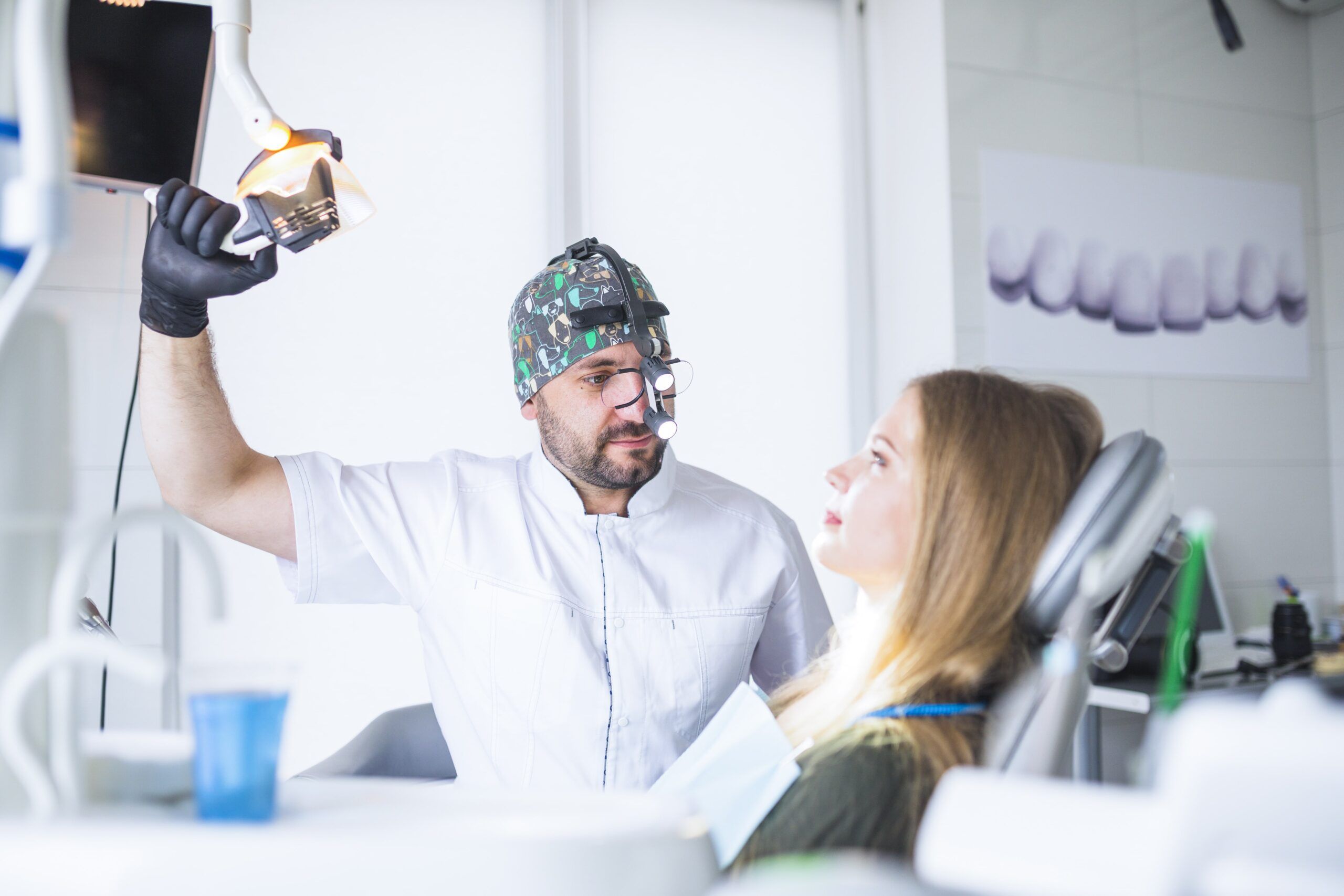
15 Jun Innovative Dental Technologies: Advancements in Modern Dentistry
Advancements in technology have revolutionized various aspects of our lives, and dentistry is no exception. From diagnostic tools to treatment techniques, innovative dental technologies have significantly improved patient care, comfort, and outcomes.
In this blog post, we will explore some of the latest advancements in modern dentistry, highlighting how these technologies are transforming the dental experience for both patients and dental professionals.
Digital Radiography
Digital radiography has replaced traditional film-based X-rays with digital imaging systems. These systems use electronic sensors to capture and store digital images of the teeth and supporting structures. Digital radiography offers numerous advantages, including reduced radiation exposure, instant image availability, enhanced image quality, and the ability to manipulate and enhance images for more accurate diagnoses.
Intraoral Cameras
Intraoral cameras are small, handheld devices that capture high-resolution images of the mouth’s interior. These cameras have a tiny, easily maneuverable head that can be comfortably placed inside the mouth to capture detailed images of the teeth and soft tissues. Intraoral cameras allow patients to see real-time visuals of their oral health conditions, promoting better understanding and communication between the dentist and patient.
Laser Dentistry
Laser technology has transformed various dental procedures, offering minimally invasive and highly precise treatment options. Dental lasers are used for procedures such as gum disease treatment, gum reshaping, cavity preparation, and teeth whitening. Laser dentistry provides improved patient comfort, reduced bleeding and swelling, faster healing times, and precise tissue targeting.
Cone Beam Computed Tomography (CBCT)
CBCT is a specialized imaging technique that provides three-dimensional images of the teeth, jawbone, and facial structures. Unlike traditional X-rays, CBCT produces detailed cross-sectional images, allowing dentists to visualize anatomical structures with higher accuracy. CBCT is particularly useful for planning dental implant placement, orthodontic treatment, and diagnosing complex dental conditions.
CAD/CAM Technology
Computer-Aided Design/Computer-Aided Manufacturing (CAD/CAM) technology has revolutionized dental restorations. With CAD/CAM systems, dentists can digitally design and fabricate restorations like crowns, veneers, and bridges in a single visit. The process involves scanning the tooth, designing the restoration on a computer, and milling it from a block of ceramic or composite material. CAD/CAM restorations offer excellent fit, esthetics, and durability, eliminating the need for temporary restorations and multiple appointments.
Teledentistry
Teledentistry utilizes telecommunications technology to provide dental consultations, assessments, and treatment planning remotely. Through video conferencing and digital communication, dentists can evaluate oral health conditions, offer advice, and even prescribe medications. Teledentistry improves access to dental care, particularly for individuals in remote areas, those with mobility limitations, or those seeking convenience and efficiency.
Importance of Technology Advancement In Dentistry
The importance of technology advancement in dentistry cannot be overstated. It has brought about significant improvements in patient care, treatment outcomes, and overall dental practice. Here are some key reasons why technology advancement is crucial in dentistry:
- Enhanced Diagnostic Capabilities: Advanced imaging technologies such as digital radiography and cone beam computed tomography (CBCT) provide highly detailed and precise images of the teeth, jawbone, and surrounding structures. This allows dentists to detect dental issues at an early stage and accurately diagnose conditions that may have been difficult to identify with traditional methods. Early detection leads to more effective treatment planning and better patient outcomes.
- Improved Treatment Planning: Technology advancements have revolutionized treatment planning in dentistry. Computer-aided design/computer-aided manufacturing (CAD/CAM) systems enable dentists to create highly accurate digital models of patients’ teeth and design restorations with utmost precision. This eliminates the need for manual impressions and enhances the fit and functionality of dental restorations, such as crowns, bridges, and veneers.
- Minimally Invasive Procedures: Laser dentistry has emerged as a valuable tool in performing minimally invasive dental procedures. Lasers allow for precise targeting of affected areas, minimizing the need for incisions and reducing patient discomfort. Laser technology is used in various treatments, including gum disease therapy, cavity preparation, and teeth whitening. Minimally invasive procedures lead to faster recovery times, less post-operative pain, and improved overall patient experience.
- Improved Patient Comfort: Dental technology advancements prioritize patient comfort during treatment procedures. Intraoral cameras enable patients to see real-time visuals of their oral health conditions, facilitating better communication and understanding between the dentist and patient. Advanced anesthesia techniques, such as computer-controlled local anesthetic delivery systems, make injections more comfortable and reduce patient anxiety. This focus on patient comfort enhances the overall dental experience and encourages regular dental visits.
- Efficient and Time-Saving Procedures: Technology advancements have streamlined various dental procedures, making them more efficient and time-saving. For example, CAD/CAM systems enable same-day dental restorations, eliminating the need for multiple appointments and temporary restorations. Digital impressions replace traditional messy impressions, making the process more comfortable and faster. These advancements benefit both patients and dentists by reducing chair time, enhancing productivity, and improving patient satisfaction.
Conclusion
Innovative dental technologies are transforming the landscape of modern dentistry, improving diagnostics, treatment precision, patient comfort, and overall oral health outcomes.
From digital radiography and intraoral cameras for enhanced imaging to laser dentistry and CAD/CAM systems for minimally invasive treatments and same-day restorations, these advancements are revolutionizing the patient experience.
Embracing these technologies allows dental professionals to provide more efficient, accurate, and personalized care while empowering patients with a deeper understanding of their oral health.
As technology continues to advance, the future of dentistry holds even more exciting possibilities for improved dental care and patient well-being. Visit McCrae Dental Surgery today and enjoy high-quality care with the latest advancements in dentistry.
